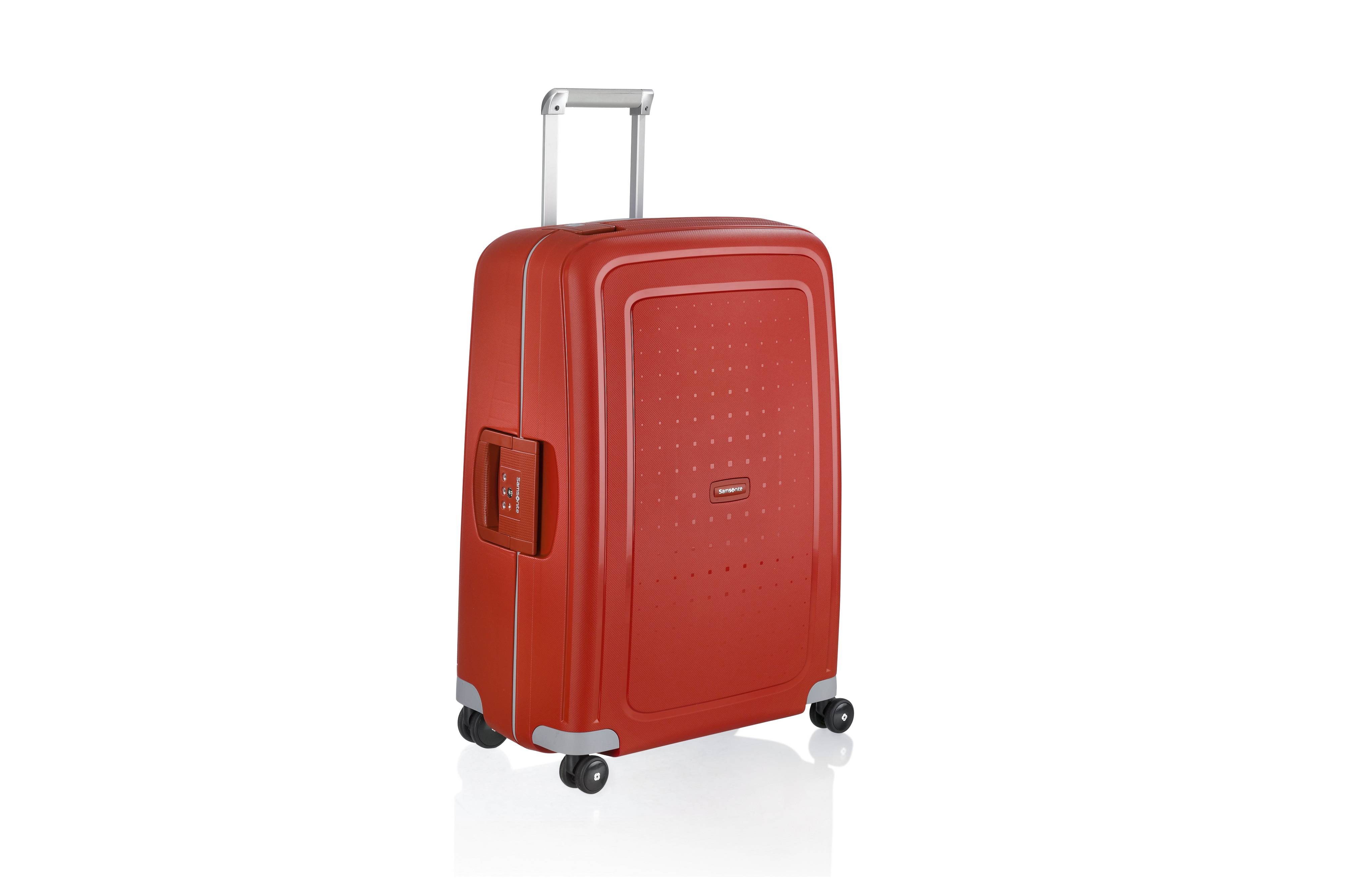Behind the scenes with 10 of Singapore's most innovative party planners
Who to follow to stay up on the city’s coolest alternative events.
Run Up

It's hard to pinpoint the exact moment when our city's revelers fell out of love with the mainstream. In the past few years, alternative parties and events, held in rough-and-ready locations like unoccupied warehouses and reclaimed outdoor spaces, have been popping up with increasing frequency. But if you want in on the action, you have to know where to look. Lucky for you, we've picked out 10 of the city's coolest independent event organizers that you should be keeping tabs on. Follow them closely, and soon you'll be rubbing shoulders with other indie insiders.
Experimental Party Planners
Longstanding scenesters Sideshow—founded by percussionist Aidan Bamrah and DJ Tom Shellsuit—have a loyal following thanks to daytime party Sunday at the Training Shed in Labrador Park. They’ve also held parties at a hidden beach club in East Coast Park and across the border in JB.
Is there a gap in the party scene that you are trying to fill?
TS: Not really—we’re just doing the kind of events we like to go to. And a big part of the enjoyment of doing these events is meeting new friends and collaborators.
And what’s the hardest part of it all?
TS: Bookkeeping and second-guessing when you’re thinking of trying something new.
The next Sunday at the Training Shed is on Apr 20, 3pm.
If you’re looking to catch cutting-edge dance music acts, keep tabs on this wacky pair—Audrey Choy and Louis Lam—who’ve brought in cult names like Boiler Room host Bradley Zero and madcap funksters Soul Clap for their hush-hush parties.
What inspired the No Party Here series?
AC: We believe the best parties, more often than not, happen spontaneously and we wanted to do just that. No serious planners here, not in it for the big bucks, and also, we like that if you read it too fast it looks like No Panty Here.
How is what you offer different?
LL: On music, we’re serious, but our affairs appear subnormal on all other levels. One of our previous parties had Djedjotronic of Boysnoize spinning against a backdrop of 70’s workout videos.
The next No Party Here (featuring Jacques Greene) is on May 2, 10pm at Kyo.
Founder Alyssa Kokilah and her team have brought underground pop-up techno-heavy festival Super 0 Season to improbable locations such as design studio The Mill and art enclave Gillman Barracks, with residents of famed Berlin club Berghain playing alongside our very own left-field DJs.
How did the idea of Super 0 Season came about?
We were inspired by lots of festivals and gigs overseas and wanted to put all our best experiences into creating something special and super fun. Cynthia Chua of Spa Esprit Group saw the potential, and then we were all off setting up Super 0 Season together.
Your goals and dreams for the agency?
We dream big! We hope to be like the Southeast Asian counterpart of Japanese events company Creativeman by putting together innovative events and experiences.
The next Aligned series, featuring Midland, Cosa Nostra and Darker than Wax, is on May 17, 10pm at Kyo. $20-$25, one drink included.
Food Warriors
We love secret supper clubs (read more about them in our story “Spilling Secrets”) and Maria Kuvshinova’s Clubvivre pulls them off fantastically. Case in point: their most recent pop-up dinner, Nordic Lights, which featured molecular cuisine served in a subzero environment, complete with giant LED walls and ice sculptures.
Tell us about your proudest pop-up.
One of my personal favorites was a 1920s steak party we threw in a private gallery of antique collectors. Guests came dressed in ’20s fashion and were treated with a meaty four-course meal paired with craft beers. The entire atmosphere felt as if we went back in time.
The core of your business is private catering. Why did you choose to branch out into large-scale events?
Our creative team is bursting with ideas, so every now and then we throw a pop-up for the fun of it. We’ve got corporate clients asking us if they can “sign up” to be part of these ad-hoc events. It’s a win-win: having partnerships with several compatible brands makes it easier to share costs and scale, so we envision we’ll do more of such events in the future.
Follow Clubvivre’s social media pages to keep updated on the next pop-up.
BACCHANALIA BRUNCH SERIES
Bacchanalia owners Alex Chew and Raj Datwani need no introduction. They’ve turned the traditional notion of Champagne brunches (read: relaxed and lazy) around with their raucous boozy brunches, which have since seen a slew of copycats around town.
What’s so great about partying the day away at a boozy brunch?
RD: There is something magical about walking out of a party and seeing that the sun is still shining. Partying in the day is also a fantastic way of having all of the fun you could have on a night out, but without the dread of the nasty hangover the next morning!
If there’s one rule guests need to abide by when attending your crazy brunches, what would that be?
RD: Come with an open mind! Brunch is a place where you can let loose and enjoy yourself no matter what age you are. It’s all about the mindset.
The next Bacchanalia Brunch is on May 17, 1pm.
Film Freaks
There’s no shortage of alternative movie screenings here, but true film buffs can dig deeper into alt-cinematic history by following indie collective S.C.U.M (short for Society of Cult and Underground Movies) Cinema—comprising Monkey Fist, Mountain Monkey and Topo Sanchez—for their free, bi-monthly screenings.
What are your thoughts on the local film scene?
Judging from the full turnout of past film festivals, we are pretty sure the Singapore audience possesses the maturity and receptiveness for all kinds of new films. That’s one of the reasons why S.C.U.M Cinema exists—to fill the void in the local cinema experience for those thirsting for alternative films.
What are some of the problems you face?
The cost of getting the screening rights, acquiring DVDs and securing a venue is not exactly a walk in the park. So for every screening, we produce limited edition artwork that is available for purchase and all proceeds will be directed to support the next screening.
Blaxploitation classic Black Belt Jones is screening on Apr 11, 8.30pm at Screening Room.
Music Champions
This global movement organizes secret gigs in people’s living rooms. Its Singaporean outpost—spearheaded by producer Sam Drury—has been slowly but surely turning the local soundscape on its head with its super intimate aural experiences.
Why did you decide to keep your pop-up gigs a secret?
Some of the principles are to maintain the cozy and intimate environment and also ensure that the people who come down for the gigs are really genuine and put in the effort. On top of that, holding it in someone’s house translates to limited space. We’re always over-booked, so it helps to keep the numbers appropriate for a session.
Have there been any surprises at the event?
Not announcing the lineup way ahead in advance is a surprise in itself. It’s an irony—a planned performance that’s completely unplanned at the same time. Artists then feel like they have plenty of scope for creativity.
Sign up at Sofar Sounds website for a chance to attend their secret gigs.
SUB-SONIC LIVE
Fred Perry’s music initiative, responsible for holding multi-sensorial concerts in abandoned warehouses and disused schools. Their Marketing/PR Manager Cheryl Ann Lee says they’re always on the lookout for something new.
Is there more demand for unconventional events?
Yes! We’ve now had parties at venues you never knew existed or thought it was possible to have a party at. It’s always refreshing to have alternate party options.
How do you pick your performers?
It starts off by going to shows, speaking to friends, social media and digital updates that catch onto our radar. Last year, we got Jeremy Lee onboard as Sub-Sonic Live’s Music Curator to oversee the gigs’ overall music direction and programming.
Follow Fred Perry Singapore’s social media pages to keep updated on the next Sub-Sonic Live.
Shopaholics Anonymous
Flea markets are dime a dozen in Singapore, and they can be hit-or-miss. But what if Singapore’s coolest fashion bloggers—including organizer Arissa Ho—got together and let you raid their closets? Problem solved! You’ll never need to second-guess the stylishness of your purchase again.
Tell us the story behind Underground Market.
[Bloggers] Venetia and Pia decided that they should get together to sell their pre-loved items. Dawn and I were roped in with Emma, Lenne and Linda Hao and the first flea happened in Pia’s basement. It’s been our venue ever since! The space is not huge compared to some other flea markets, but it is still spacious and homely. The best part is that it’s air-conditioned.
Why do you think flea markets are so popular right now?
Many people realize the impact that the clothing industry has on the environment, and it is a lot of wastage to deal with. We view it as a great opportunity to mingle with our blog readers as well.
The next Underground Market is slated to happen in July. 33A Chiltern Drive. Free.
Kilo is so much more than a restaurant these days, what with its new party space on level 8 and regular DJ gigs. The clearest indication that they’re truly hip? The fact that Jasmine Tuan (of the now-closed boutique Blackmarket) and Bobby Kwok are collaborating with them for this curated flea market series.
Who are your vendors?
JT: Previous editions had Kult, Koom, Lulubare, Mandy T Skincare, Nilos Beachwear, MAH collection (scarfs), CindyKate / ContraBrand, theWYLDshop.com, WattleTree and Kelly Su. There was everything from sustainable shoes, jewelry, high-end swimwear and art pieces.
Do you think there’s enough appreciation and support for local artists and talents?
JT: Compared to 5 years ago, there’s definitely a significant growth in local brand awareness and support. Consumers must know that they are the investors of brands they want to see more of.
The next $langin’ Saturdays is expected to be held in late May at Kilo.
Advertisement
Odds are you only look at flight timings and price when booking your weekends away. But when two airlines come out even, how are you going to choose between them? Since this is Singapore, what better way than by picking your flight based on who has the best on-board grub? We sampled the food available on the Singapore-Bangkok route of four low-cost carriers, to see who came out on top.
Typical menu items
Destination-specific—in this case, a good mix of local Singaporean fare like chicken rice ($5.90) and classic Thai dishes like basil fried chicken with rice ($5.80).
Specials
Expect seasonal items for festive periods like Hari Raya as well as locally-relevant products like made-in-Thailand banana chips ($2.30).
What we tried
Presentation
Standard aluminium cases—solid, but unremarkable.
What we liked
Much cheaper than the rest; generous portions; and a decent level of spice.
What we didn’t
Nothing, really.
Overall
It’s hard to argue with prices like that.
Rating
√√√√√
Typical menu items
Singaporean and Southeast Asian signatures like mutton biryani ($12) and oriental chicken stew ($12). Plus a solitary Thai red vegetable curry ($12).
Specials
Only occasionally do they offer specials. The last one they had was during Christmas—a roast turkey with cranberry sauce.
What we tried
Presentation
Comes in a plastic-sealed black container. It’s neatly arranged, at least.
What we liked
Umami-heavy, tender chicken in the nasi lemak; juicy meat in the chicken rice.
What we didn’t
Mushy rice; tough sandwich bread; spice overload with the Nyonya chicken rice.
Overall
They don’t scrimp on flavors; but you’re best sticking to the signature dishes.
Rating
√√√√
Typical menu items
A mix of local Singaporean choices, international options and Thai dishes. Don’t expect a wide range to choose from.
Specials
Festive season-dependent. During Songkran, there’ll be a pad thai dish on offer.
What we tried
Presentation
Neat, tidy and efficiently organized. Kind of like Singapore.
What we liked
The green vegetable curry and chicken rice were good; the chicken tikka masala even better.
What we didn’t
It was a hearty portion, but the udon noodles with shrimp lacked in flavor compared to the rest.
Overall
Limiting their options does at least mean more attention to the ones they have. Go for Indian if you’re at all in the mood.
Rating
√√√
Typical menu items
Unless you’re pre-ordering your food (you have more local and international choices then), the focus is on Western favorites, although there’s also a Thai red curry with mixed brown rice ($12).
Specials
Not so much; though they did have turkey on offer at Christmas.
What we tried
Presentation
If they’re not covered with aluminium foil, they’re sealed with peel-off plastic. We struggled with the latter.
What we liked
The “healthier option” labelling is a nice touch; the beef bourguignon was ambitious but impressive.
What we didn’t
It’s pretty pricey (relatively speaking); and the noodles and rice were a bit limp.
Overall
Hard to fault the variety—especially if you pre-order—but we say pick their Western options over other items.
Rating
√√√
Advertisement
Moral Fiber


In a Jiffy


Alibabar the Hawker Bar
Previously known as Ali Baba Eating House, this East-side hangout went through a major revamp and came back as a “Hawker Bar”. A coffeeshop by day and hawker bar by night, this is where you can sip on upmarket brews and a cup of milo peng, all in one place.
Bincho
Part of Loh Lik Peng’s Unlisted Collection group (Esquina, Burnt Ends), this eatery in one of Tiong Bahru’s art deco blocks leads a double life. In the day, it’s an old-school mee pok stall and at night, it transforms into a so-hip-it-hurts Japanese yakitori bar.
Bokky Curry
Young couple Lim Kim Bak and his wife Eunice Oh run this new hawker stall (opened early February) in Hong Lim Food Centre selling curry chicken, a hot local favorite. Drop by early to avoid disappointment—their main star runs out fast. How fast? Follow them on Facebook (they’re super active there) to find out.
Coocci Contemporary Japanese
This Japanese stall couldn’t feel more out of place. On offer are classic Japanese creations (like curry udon and rice bowls) as well as other random
fusion plates, including chicken tortellini.
The Good Beer Company
Daniel Goh’s great little drinks stall offers over 50 different beers and ciders, from countries like Taiwan and the US. He also owns Smith Street Taps, a stall selling craft beer on tap (which is right next door).
PasarBella
With everything from a mini wet market at Oceans of Seafood to food stalls selling artisanal products (run by passionate folks like Ai Ming Syu at The Cheese Ark and Corrine Chia at the neighboring Great Beer Experiment), PasarBella is as much upscale hawker as it is farmers’ market.
The Soup Bar
Helmed by chef Gary Lum (who spent 10 years working in the kitchens of places like The Ritz Carlton and Brasserie Gavroche), this new stall serves wholesome gourmet soups, pasta and salad.
Twoface Pizza & Taproom
Another case of split personality in Tiong Bahru. By day this spot is a kopitiam and by night it’s a self-service pizzeria (well okay, maybe the kopitiam tradition of self-service is still kept alive) serving locally-inspired grub and craft beer.
Advertisement
Lamenting the loss of Singapore’s hawker traditions is nothing new. You know the story: after years of generational hand-me-downs, today’s kids don’t want to take over their mom and pop’s business, don’t think running a food stand is what a uni-educated, high flyer should strive for. Perhaps their parents have higher hopes for them too. Monocle’s Tyler Brûlé had a point when he said recently that, unlike Japan, “…where there’s a growing culture of young people who are assertive about their choices [and] it’s a respectable option if you want to run a café… Singaporeans see it a little differently…such jobs are for the labor classes.”
There has been no shortage of attempts to stem the tide, from strict control of rental regulations in hawker centers (implemented in April 2012) to prevent food prices from going up, to getting social enterprises to step in to manage hawker centers. What’s never really been done, though? Making casual style hawker cuisine, rough and ready dining spots and the idea of mixing and matching your dishes seem cool.
Yet that’s exactly what’s happening right now. A host of new spots and concepts, typically run by folks too young to remember the glory days of the mid-80s when there were some 150 hawker centers across the island (the number today is closer to 100) are turning expectations about what to expect from a cooked food center on their head. From craft beer stalls in Chinatown to a hybrid mee pok-yakitori concept in Tiong Bahru, everywhere you look there’s someone experimenting with something a little different. On their own, of course, they’re but a drop in the deep fat fryer. Some of the concepts scream try-hard; others obviously won’t last. But throw in smarter social media marketing around home-grown dining concepts (witness The Tuckshop’s ingenious happy hour promotion in response to the Anton Casey affair), recent calls online for the establishment of a National Food Council, last year’s Youth Hawkerprise initiative and, if only for the name, Mediacorp’s new Wok Stars TV cooking show, and it all seems indicative of a new, grass-roots appreciation for our foodie heritage that goes far beyond tiresome arguments over who serves the best chicken rice.
Can these places fill the hole left by a generation of hawkers retiring? Of course not. Will the food court of 2020 be made up mostly of cronut stands? We’d certainly hope not. But if the hawker center as we know it today may be doomed, that pop-up umami burger stall you see today may just be the first iteration of what will ultimately come to replace it.
Heating Up
Anthony Bourdain was one of the first to spot the trend. Speaking at last year’s World Street Food Congress here, Mr. Kitchen Confidential predicted these young upstarts could be the salvation of hawker centers. “It’s going to be young hipsters who do not want to be lawyers,” he said. “They’re rejecting what their parents tell them [to do] and, instead, they decide to open a bunch of hawker stands serving delicious, possibly strange food.” He was backed by the former chairman of the National Environment Council, Simon Tay, who said the future belonged to ““exciting young guys who want to try out something new in our hawker centers”.
Bourdain went on to say that we could look forward to “retro, hipster hawker centers” run by “young, hip kids who want to (do things) the old-school way.” And this is a man who loves the hawker concept so much he plans to open a huge street food market in New York, with a “dream list of chefs, operators, street food and hawker legends from around the world”. He told New York’s Eater,
“I hope to soon be able to enjoy a really good chicken rice in NYC.”
Overcooked
Lack of interest in the trade isn’t just about better jobs in other industries. A shift toward healthier food options, a failure to think ahead and the troubles of balancing the books all play their part.
Costs are an especially sensitive issue: many first-generation hawkers enjoy heavily subsidised rent; second-gen’ers often sub-let for sky high prices (a practice which will come to an end in 2015); the latest class are neither subsidized nor can they sub-let; and the net result is a lack of real parity: three generations of hawkers can exist side by side, each paying vastly different rent. And despite all this, there’s a general expectation that hawkers will somehow maintain their rock-bottom prices—according to The Straits Times, fishball noodles and chicken rice only went up by $0.50 in three years—through thick and thin (despite our eagerness to pay upwards of $5 for a flat white).
Makansutra’s KF Seetoh (a good friend of Bourdain’s, by the way, and the guy behind World Street Food Congress which returns in early 2015; wsfcongress.com) has bemoaned the lack of entrepreneurship around many of even the most successful hawkers; who do a great trade but too rarely plan for the future or even look to expand in the present. And complacency has certainly crept in; we’ve taken the hawker culture for granted and perhaps standards have slipped (how else to explain Gordon Ramsay winning one of the three rounds of last year’s Singtel Hawker Heroes?).
Says Daniel Goh, whose Good Beer Company at Chinatown Complex was one of the first of this new wave, “Hawkers don’t get enough respect for what they do. While famous hawkers are lauded, by and large people look down on them as lowly educated and servile.”
As Goh notes in some insightful essays at his blog The Beer Hawker (thebeerhawker.tumblr.com), “the biggest problem facing our hawker heritage is the fact that there is little or no renewal in the system.” 2013 saw the death of hawker legends like Ng Ba Eng of Eng’s Noodle House and Andrew Lim of Yue Lai Xiang Chng Tng at Bedok Corner and, on a larger scale, longstanding hawker centers are closing at a depressing rate, with both Golden Bridge and Commonwealth Avenue shutting up shop as recently as 2011.
Get With The Program
So what’s being done? Clearly a few smart, hip operators alone can’t reverse the decline. But by helping to recast people’s preconceptions and make the hawker trade a viable career choice, they may just spark a much needed revitalisation of the street food sector.
The Government is throwing its weight behind a new Hawker Master Trainer Pilot Program (a joint effort of the Singapore Workforce Development Agency and the National Environment Agency (NEA)), which launched last month and sees 50 aspiring “hawkerpreneurs” undergo on-the-job training with four veteran hawkers, for five to six months. “This collaboration [...] will contribute to preserving our unique hawker heritage and ensuring that traditional hawker fare will continue to thrive, even as times change and food tastes evolve in Singapore,” says Richard Tan, director of NEA’s Hawker Centres Division.
Addressing the growing demand to eat clean, the Health Promotion Board (HPB) also jumped in to salvage the hawker situation with the launch of the Healthier Hawker Programme (www.hpb.gov.sg) in 2011, encouraging hawkers to offer more wholesome food choices.
There are also plans to build an additional 10 new hawker centers by 2017 and in doing so increase the number of available stalls, especially in areas that are currently underserved. As well as hopefully driving down rents, there’s been some interesting experimentation with how these places are run; though the first hawker center run by a not-for-profit social enterprise, Kampung @ Simpang Bedok, closed in October 2013 after barely a year of operation. The group of friends behind it, with backgrounds in finance and construction, admitted they lacked the experience to make it work. And though other social enterprises and cooperatives recently bid for the soon-to-expire lease on the centers at Ghim Moh Road, Upper Changi Road, Aljunied Avenue 2 and West Coast Drive; Kiang Chou Tong, the president of Ghim Moh Market/Shop Merchants’ Association, told Today last month that their members, “hope NEA will continue to manage the hawker centers because they are a neutral party and will look after the hawkers’ interest. There has been no precedence with other groups, so they’re worried if this will succeed.”
The Dark Side
It’s not all peachy keen for every youngster that pursues the hawker dream. Recently, 28-year-old Tan Jun Yuan and his now defunct bak kut teh stall in a Toa Payoh coffee shop have been all over the news. The young hawker left his job as a product manager and started the food stall with high hopes, only to decide to shut it down in February due to foreign/local manpower issues (amongst other reasons). When I-S got in touch with Tan for an interview for this story, he apparently had so much to say that he feared his full “statement” wouldn’t be properly represented enough to do the situation justice. Speaks volumes on how the fight to keep hawker traditions alive is an eternal struggle.
The Young And Restless
Yet it’s the emergence of these impassioned young operators diving head-first into a seemingly uncool trade that might hold the most promise. While there aren’t enough of them to immediately compensate for the slow death of the hawker tradition (Daniel Goh laments that we are “losing our hawkers far faster than we can replace them”), the new generation of hawkerpreneurs could be the first light at the end of the tunnel.
For these bright sparks, it’s as much about keeping costs down as it is about the heritage-saving mission. “I had a tight budget and the initial outlay for a coffeeshop stall is relatively low… There’s no need for furnishings, renovation, etc.” says Andrew Sim, owner of gourmet burger joint De Burg in Bukit Merah.
Sebastian Ho of Sebastian Mix Fusion Cuisine, who puts out Italian-Japanese creations from a small stall in Everton Park, feels the same way: “I chose to set up a hawker space because I wasn’t ready for a full-fledged restaurant and I felt that by starting small, things would be more steady in the long run. Also, with a hawker stall, I’m able to reach out to more people by serving good food at a very reasonable price so that they can have it every day.”
And whatever the reasons behind their decision, these folks are clearly bringing something new to the table to keep the city’s foodies interested. “We are reinventing and refining local hawker fare, rather than changing traditional recipes, with modern cooking techniques” says Gwern Khoo of Amoy Street’s A Noodle Story, a ramen stall offering noodle bowls with a local twist.
Changing perceptions may take time: “Generally customers are thrilled to see something new and fresh, but there are some who require more time to accept different food concepts in a hawker,” says Gary Lim of The Soup Bar. “Business can definitely be better; people just need to ‘know’ or ‘be educated’ that they can find freshly made food at a hawker and at hawker prices.”
But while it’s still early days, there’s enough buzz around this ground-up movement to suggest it might just be the tonic the trade needs if it’s to evolve rather than go extinct.
Essentials
A Noodle Story #01-39 Amoy Street Food Centre, 7 Maxwell Rd., 9027-6289, www.anoodlestory.com | De Burg #01-40 Stall 1, 119 Bukit Merah Lane 1,
www.facebook.com/deburgsingapore | Sebastian Mix Fusion Cuisine #01-01, 7 Everton Park, 8126-0646, www.xiaodidelivery.blogspot.sg/p/sebastian-fusion-cuisine.html
Find out where to go for your hipster hawker fix!
Advertisement